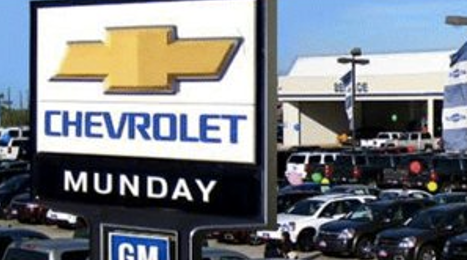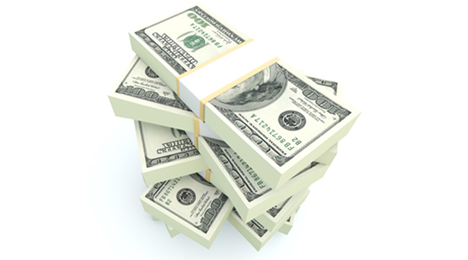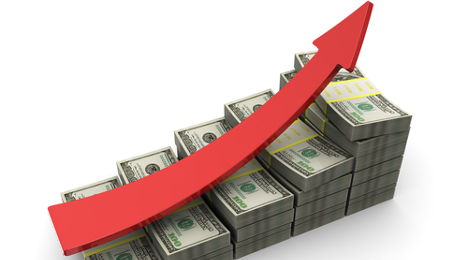Penske Automotive Group hosted their third-quarter conference call this week, outlining details on multiple company records. Penske posted its highest third quarter and nine-months income from continuing operations and earnings per share in company history.
The company had total retail unit sales of 104,963 (U.S. and international combined), a 10.2-percent year-over-year increase. And the used department was especially strong, increasing 11.6 percent year-over-year with 47,690 used retail unit sales.
Meanwhile, new-vehicle unit retail sales were up 9.2 percent with 57,273 cars sold.
Moving over to gross profits, Penske indicated that gross profit per used vehicle retailed was $1,800 in Q3, down from $1,869 a year ago.
Roger Penske, the group’s chairman, was pleased with the company’s record results.
“Our business delivered another strong quarter, including an 11.2-percent increase in same-store retail revenue,” Penske said. “Our results in the quarter were highlighted by another outstanding performance from our U.K. operations as our international diversification continues to complement our U.S. operations.”
Regarding the aforementioned records, Q3 income from continuing operations was $76.4 million, a 15.6-percent increase. Related earnings per share were $0.85, a 16.4-percent hike. For the nine-month period, income from continuing operations was $222.8 million, a 19.5-percent hike. EPS was from continuing operations was $2.46, a 19.4-percent uptick.
Having a shared platform appears to have a positive effect on the auction prices of salvaged vehicles. That’s according to Insurance Auto Auctions' recent 2014 Industry Report Six-Month Update, where it has begun to look into the long-term consequences, both positive and negative, of the ever-increasing trend of cross-platform and modular-platform use in vehicles.
The company’s president and chief executive officer, John Kett, took the time to speak with Auto Remarketing and shared his thoughts regarding the effect of shared platforms on both the salvage side and the manufacturing side of the automotive industry.
“We sell a lot of cars, in basically every market in the U.S. and Canada, so we certainly are seeing it,” Kett said. “We’ve only just begun to study the platform-consolidation aspect of it.
“This is something new that we’re beginning to look at to just really understand what impact it’s going to have,” Kett continued.
In the report, two approaches were made to attempt to analyze how platform sharing affected past IAA auction prices. First, sales prices between vehicles on shared platforms and single platforms were compared to determine the effect on sales prices. Second, a single common example, the Ford Focus, was studied to determine whether moving from a single platform to a shared platform affected its action price.
According to the report, shared-platform vehicles sold for $162.22 more than those on non-shared platforms, on average. In the case of the Focus, however, no statistically significant difference was found when comparing the sale prices before and after the model switched to a shared platform. The report did find a difference in the sales performance of the Focus over the shared-platform time period when compared to the non-shared platform time period, noting an average increase of $673.91 when on a shared platform, but the difference could be due to the model’s 2012 redesign.
Two potential theories were further detailed in the report:
- Buyers find vehicles on shared platforms more valuable because a greater number of the vehicle’s parts can be used to repair other vehicles on that same platform.
- Manufacturers can produce a better-quality product with a shared platform, and that quality is then reflected in auction prices.
The IAA currently utilizes five metrics for evaluating the health of the salvage industry: the Crushed-Car Price Index (CCPI), metal prices, Producer Price Index of Motor Vehicle Parts Manufacturing (PPIMV), Used-Car Price Index (UCPI), and the Index of Foreign Buyers. Platform sharing, while having been used by manufacturers for years, is something Kett never expected to have such an effect on salvage auction prices.
“It’s a much more sophisticated driver of salvage values than I certainly thought when I got into this business 13 years ago,” Kett said. “So it’s one component; it is very hard to isolate the impact of one driver on the value.”
Kett noted that, although manufacturers can possibly make a better vehicle foundation by pooling research and development funds into fewer platforms, there are still inherent risks, some of which we may be seeing today.
“As I look at it, the thing that comes to mind is the recall sort of impact,” Kett said. “If they’re using a very common technique across multiple platforms, if they have an issue with it, I would be concerned that it’s going to affect many more vehicles than it would have in the past, where if it was built specifically for a make or model. Now, if you’ve got it across you’re whole lineup, I think it could really hurt a manufacturer if they had any quality issues.”
Although the evidence is building in favor of the positive effect of cross platforms on salvage prices, Kett noted that it’s something the IAA is going to keep an eye on.
“Our view is that this platform-consolidation is a new trend that we need to pay attention to, to make sure our customers understand what impacts they might have,” Kett said. “We’ll continue to study it and report on it in subsequent editions.”
During its third-quarter conference call, Sonic Automotive highlighted several all-time records, including those set for new retail unit sales, pre-owned gross profit and third quarter total gross profit.
When asked if something was happening to separate Sonic from the pack during its strong quarter and used-vehicle sales increase of about 5 percent on the same-store side, Scott Smith, the company’s president and chief strategic officer, attributed the steady increase to his dealers’ consistent inventory levels, which have traditionally been light.
“I just think that with the great inventory management, our systems are running on a traditionally, versus the rest of the world, light day supply of 25-27 days,” Smith said. “If you go back and look at our performance, we just haven’t had those inventory pressures that caused those kind of adjustments. You’ve got to remember there are 42-45 million used cars sold every year and what makes a group go up and down, or a dealer go up and down, is just getting their inventory out of whack. We just haven’t had that kind of pressure here in a while.”
And, according to Smith, he doesn’t think they will face that kind of pressure again, due to his faith in Sonic’s digital inventory management systems. Smith also believes the sales will retain their consistency for the foreseeable future.
“I think the used-car business is pretty solid,” Smith said. “Our volume is decent. We sold 90 cars per rooftop, and we want to be at 100, but it wasn’t too bad. Our gross was good. Over $1,500 for us; that’s the highest it’s been in a while.”
When asked if they should be keeping higher inventory levels going into the coming months to drive sales, Jeff Dyke, Sonic’s executive vice president of operations, seemed to think that going into the winter months light is the way to go.
“You never want to have a heavy inventory coming out of July, August, September time frame,” Dyke said. “All the dealers start selling their cars in October, November and December, all the mom-and-pops and single dealership owners are clearing up inventory. You can see some of the bigger dealership groups doing that now, it’s a great time for us to buy. So you’ll see us push our inventory levels up in the fourth quarter.”
While remaining conservative with its inventory, and also continuing to test the waters with its EchoPark and One Sonic-One Experience, Smith remains optimistic, even hinting at further group growth.
“It wouldn’t surprise us at all that a couple more dealerships enter the Sonic family here in ’15,” Smith said. “That’s both from an acquisition and an add-point perspective.”
Like many dealerships are facing nowadays, Group 1 Automotive had to turn more used vehicles to push its overall revenue and gross profit figures higher during the third quarter because gross profit per unit softened by 3.3 percent, or $52, per vehicle.
The company’s top-line third-quarter metrics in the used department settled with retail revenues increasing 16.2 percent on rising unit sales of 10.4 percent. Group 1’s total retail used-vehicle gross profit increased $6.8 million to $44.3 million. But drilling down deeper into the company’s quarterly report showed the road Group 1 had to navigate to reach those figures.
Group 1 retailed 24,917 used vehicles in Q3, up from 22,206 units in the year-ago period. Meanwhile, the company’s gross profit per unit dipped to $1,535, down from $1,618. And that movement came as the average retail asking price moved up 3.6 percent year-over-year in the third quarter, rising from $19,982 to $20,705.
While much of the company’s quarterly conference call focused on Group 1’s activities in the U.K. and Brazil, Wall Street observers still wanted to know why the used-vehicle performance settled the way it did.
“There was some pressure in the used-car business in the quarter,” Group 1 president and chief executive officer Earl Hesterberg said. “First of all, after August, generally, there's a seasonal pressure in terms of downward prices in the guidebooks.
“But also I think it's been well-publicized that there is some increasing supply with off-lease vehicles. And then, in addition, there were some pretty aggressive new-car marketing pushes, particularly through Labor Day and August. And I think new-car prices and transaction prices probably sat down on used-car prices,” Hesterberg continued.
“So when the market shifts like that and there's pressure on demand, I think we all try to keep our inventory turning and keep it clean,” he went on to say. “So we've probably retailed some vehicles at a lower margin rather than send them to auction and take a small wholesale profit. I think it's a combination of increasing supply and new-car pressure pushing down on used-car demand.”
Later in the call, another investment analyst wondered if Group 1 is seeing new-vehicle leasing take away from business that might have boosted the used department.
“I think most of the OEMs in the recent one- to two-year period have gotten fairly aggressive in leasing, but I haven't seen anything atypical lately,” Hesterberg said.
Elsewhere in the financing realm, Group 1 posted a 5.5-percent jump in F&I gross profit per unit as it moved up to $1,450 from $1,375 in the year-ago quarter.
On the new-car side, Group 1 sold more new models without grosses slipping. Company dealerships retailed 36,649 new vehicles in Q3, up 11.5 percent from the last year’s third quarter total of 32,866 vehicles. And the gross profit per new vehicle ticked up 2.7 percent, going up to $1,691 from $1,646.
As an entire company, Group 1 reported that Q3 adjusted net income came in at $39.8 million, which equates to a diluted earnings per common share of $1.57. The company added total revenue grew 12.2 percent to an all-time record of $2.6 billion.
Group 1 pointed out that the quarter included several significant non-recurring charges, especially relating to a convertible senior notes repurchase, which resulted in GAAP net income and diluted earnings per share of $26.2 million and $1.03, respectively. Adjusted net income increased 21 percent from the comparable, adjusted prior-year period.
On a GAAP basis, the company said its net income decreased 20.2 percent from the comparable prior-year period.
Year-to-date adjusted net income increased 9.1 percent, according to the company, which also mentioned adjusted diluted earnings per common share for the first nine months of 2014 were $4.22.
On a GAAP basis, officials computed net income decreased 19.4 percent from the comparable prior-year period.
Group 1 acknowledged adjusted net income for the third quarter of 2014 excludes $13.6 million of net, after-tax adjustments, including $17.9 million of charges related to the repurchase of our 2.25 percent and 3.00 percent convertible notes, and $6.6 million of asset impairments primarily associated with the pending disposition of vacated U.S. dealership real estate and three Renault franchises in Brazil.
The company added these charges were partially offset by a net $8.6 million gain on the sale of U.S. dealerships and associated real estate, and a $3.4 million income tax benefit related to deductible goodwill in Brazil.
"We are delighted to announce all-time record earnings this quarter, with the results driven by strong expense leverage and significant revenue increases across all of our business sectors,” Hesterberg said
“Our international businesses were major factors in our success, with our United Kingdom operations delivering all-time record earnings for the quarter and our Brazilian operations returning to profitability following a significant restructuring,” he added.
Store Footprint Developments
As mentioned in its report, Group 1 made several moves with its stores during the third quarter.
Looking solely at its decisions in the U.S., Group 1 acquired a Chevrolet franchise and Mazda franchise in Houston and a Mercedes-Benz franchise and Sprinter franchise in San Antonio. Meanwhile, the company divested its BMW, Mini, Mercedes-Benz and Sprinter franchises and associated dealership real estate on Long Island in New York. The company also disposed of a Honda franchise in Freehold, N.J., and divested a Volkswagen franchise in Holiday, Fla.
“In the case of exiting the Long Island market, it was just very high-cost place to do business,” Hesterberg said. “We had some major capital expenditures required that was only going to make that worse. And we just didn’t have a consistent track record of generating the profits that we needed for a good return for our shareholders.
“So we had opportunities to invest in places like Texas, where we are highly confident that we have scale, leverage and know what we will get out of an investment,” he continued. “It was really kind of a shareholder-driven thought process.
“Each market is so different and the dynamics are so different. We’re constantly evaluating that, and it’s kind of hard for me to prognosticate much beyond that,” Hesterberg added about what Group 1 might do next.
However, Hesterberg did discuss how Group 1 is performing regionally, reiterating the company’s strength in the Lone Star state.
“Texas remains very strong and so does Boston and New Hampshire,” Hesterberg said. “The weaker area for us has been New Jersey and New York. We exited New York, and New Jersey is still a challenge for us.
“We have dealerships in Atlantic City, and you've probably read about the casinos and some of the issues in that part of the world so that’s still a weak area,” he continued. “Also on the Gulf Coast, in particular, New Orleans, in fact all of Louisiana, the new-car market is down significantly this year.”
So might Group 1 keep looking to buy stores in its strongest regional markets? Hesterberg didn’t share any specifics.
“We had some opportunities earlier in the year, and they were large opportunities, and I believe those will work well for our shareholders. I don't see those same opportunities for our company at the moment. It does appear that prices have gotten very, very high. And while there still seems to be a lot of businesses on the market, I don't see that type of pace in the U.S. in the near term,” Hesterberg said.
“I have seen more deals on the market in the last couple of months. But the ones that I've seen, the prices just wouldn't work for a proper return on investment. So that can change tomorrow. It's very dynamic,” he continued.
“Almost every deal starts with an asking price that's too high,” Hesterberg added. “There is potential for more acquisitions because there are so many deals out there and prices do get negotiated.”
There was an 18-percent year-over-year rise in the amount of cash incentives used by automakers during the third quarter, according to LMC Automotive data cited in a sales analysis from the Ernst & Young Global Automotive & Transportation Center.
And surging cash incentives, says Ernst & Young’s Randy Miller, are having an impact on pre-owned, enticing many consumers to go new instead of used — perhaps one of the big reasons new-car sales came out quite rosy at 4.3 million units for Q3.
“This spike (in incentives) has led shoppers to consider new vehicles over used ones and has, more than likely, played a role in the strong new-vehicle sales for the quarter,” Miller, who is global automotive and transportation leader at EY, said in the analysis.
“It does not appear that automakers are using incentives to clear out leftover 2014 model-year vehicles in order to make room for new products, as incentive spending on 2015 model-year vehicles has been roughly 17 percent higher than spending on 2014 model-year vehicles in Q3 2013,” he added.
Meanwhile, showing declines for several months has been the price of used cars, Miller said, which began a downward slope when summer began. High off-lease volumes have driven up inventory, he said.
Most segments saw their prices fall in the ballpark of 3 percent in September; the only outlier was the pickup truck, whose prices were actually up 6.5 percent given the continued strength in the housing/construction markets and subsequent constricting truck supply.
“The used-vehicle market is expected to continue its rebound through the remainder of 2014 and into 2015 and is anticipated to go back to historical norms as used vehicles become more affordable,” Miller said.
Much of these same trends were evident in the latest Beige Book report released by the Federal Reserve on Wednesday, which pointed to varying levels of auto sales growth across its 12 districts that was found to be “generally positive.”
Of particular note in two districts was talk of incentives.
In the Cleveland district, for example, the Fed said it “heard several reports about automakers becoming increasingly dependent on the use of incentives to boost sales.”
Likewise, the Fed included this among its analysis via Richmond district contacts: “A car dealer near Washington, D.C. said he expects this year's sales to be about the same as the record sales of a year ago, with dealer incentives helping to move current-year models.”
The insight specific to the used-car market shared in Beige Book report were these findings:
- In the New York district, dealers in the Rochester area were finding that both the used- and new-car businesses were experiencing “favorable market conditions.”
- Additionally, the Buffalo and Rochester areas of the New York district continue to see solid wholesale and retail credit conditions for dealers.
- The Cleveland district showed a slight sequential dip in used sales, but year-to-date sales were ahead just a bit.
Carvana executives highlighted that the company that sells used vehicles completely online is on track for a more than 1,000-percent increase in revenue during its first full year of sales.
Should the company maintain that pace, Carvana expects its 2014 revenue figure to climb to $50 million.
“Since our launch, we have been focused on reinventing the car buying experience to offer the most convenient and transparent process available that transcends generations,” Carvana president Ernie Garcia said in a press release. “From our 360-degree photo process, market-price comparison and KBB pricing tools and seven-day test-own return policy, customers can be confident they are receiving a quality vehicle at a great price.”
Carvana management is excited about what’s pushing the trajectory of its current sales path. The used-vehicle retailer isn’t just dependent upon high-tech consumers who might have been first in line for the newest iPhone.
Rather, as Garcia explained it during a previous conversation with Auto Remarketing, the site’s customer base that’s been building since the launch 18 month ago “just looks like Middle America.”
Garcia insisted buyers of used vehicles through Carvana have been broad based. The company offers a platform for shoppers to browse vehicles, find financing and coordinate delivery all online.
Following a recent expansion, nearly 2 million consumers are eligible for free delivery across three markets: Atlanta, Nashville, Tenn., and Charlotte, N.C.
In addition to home delivery, all Carvana customers can elect to pick up their vehicle at the company's car-vending machine in Atlanta.
To help keep up with growing demand, the company recently announced it was increasing its workforce by more than 50 percent.
“The 99 percent of Carvana customers who recommended our company to their friends fuels our desire to push the envelope with new and innovative solutions to give car buyers and sellers the most convenient and transparent experience,” Garcia said.
For more on Carvana, be sure to see the print and digtal editions of the Oct. 1 Auto Remarketing, which includes an inside look at Digital Trends, Tools & Strategies.
Fueled by significant turn increases for vehicles 5 years old and newer as well as financing to subprime borrowers, the used-vehicle industry closed the last month of the third quarter with 4.3 percent sales gain.
CNW Research determined September contained more than 3.8 million used-vehicle sales among turns at franchised and independent dealers and private-party transactions.
While that figure represented a year-over-year gain, CNW acknowledged September’s sales reading remained basically unchanged compared to August.
Analysts found that franchised dealers fared best in the used-vehicle space last month as those stores generated a 6.6-percent rise in units sales and gained market share both on a year-over-year and month-over-month basis.
CNW indicated independent dealers turned more units in September versus a year ago as sales ticked up by 2.4 percent. However, analysts found that independent stores lost market share last month, dipping from 34 percent to 33.4 percent.
The firm found that September’s private-party sales rose by about 3.2 percent versus a year ago, but they trailed August’s figure by 10.6 percent.
No matter where the sale took place last month, CNW noticed the average transaction price climbed nearly 18.5 percent in September compared to a year earlier. But the prices trailed August's figures by 1.2 percent.
“The year-over-year gain is primarily due to improved inventory of younger vehicles including off-lease models,” CNW president Art Spinella said.
“Independents, however, saw their transaction prices gain 1.7 percent versus year ago and trail August by 0.11 percent,” Spinella added.
Spinella computed that the total value of used vehicles sold in September came in at $40.86 billion, marking a 16.9-percent increase above the same month last year but down by about a third of a percent compared to August.
In what should portend into another great month for certified used-vehicle sales, CNW broke down the September sales increases based on vehicle age:
—1 year old: Up 11.06 percent
—2 years old: Up 21.54 percent
—3 years old: Up 12.15 percent
—4 years old: Up 9.25 percent
—5 years old: Up 13.58 percent
Of the kinds of vehicles turned in September, CNW mentioned the trends mirrored what’s happening on the new-car side. Trucks increased its share of total used sales by climbing 9.4 percent versus year ago and boosting the segment’s share from 47.2 percent to 51.7 percent.
The firm noted SUVs also made significant increases in September compared to year ago, jumping 18.24 percent and representing 8.3 percent of all used sales versus 7.3 percent a year ago.
Finally, CNW pointed out the total number of used-vehicle shoppers slipped to 8.52 million last month from 9.77 million in September of last year. That drop-off represented a 16.1-percent decline.
On a shoppers-to-buyers ratio, CNW calculated there were 2.24 shoppers for each used-vehicle sold in September, down 16.3 percent versus a year ago but up 0.2 percent compared to August.
September’s Subprime Used Sales Spike 31 Percent
Subprime auto finance companies must not be taking their collective foot too much off of the originating pedal based on the amount of used-vehicle paper CNW Research found to be written in September.
During a month that contained more than 3.8 million used-vehicle sales among turns at franchised and independent dealers and private-party transactions, CNW indicated the number of subprime buyers in September “skyrocketed” by 31.0 percent compared to the same month in 2013. The firm noted the September reading also jumped nearly 2 percent versus August of this year.
And business wasn’t just busy at finance companies taking in subprime paper. CNW highlighted that buy-here, pay-here dealers saw an 18-percent gain in unit sales during September versus a year ago.
Furthermore, CNW mentioned subprime purchasers with FICO scores below 550 rose 27 percent year-over-year in September and represented nearly 19.3 percent of total used sales during the month. That credit segment produced a 21.9-percent gain over last year and a 5.6-percent increase over August of this year.
All told, CNW determined 69.1 percent of all used-vehicle transactions in September had some kind of financing, up just slightly from the year-ago figure of 69 percent. Analysts found the number of pre-approved loans climbed 19.4 percent versus last September and 3.5 percent versus August.
CarMax reported a record second quarter this week, reflecting an increase of 6 percent in total used-vehicle sales.
An interesting statistic helping to drive those sales, according to the company’s executive vice president and chief financial officer Tom Reedy, continues to be the financing options available to CarMax customers through its variety of lenders.
“They’re down slightly but we’re still seeing over 90 percent of our customers receiving approval of some kind in our stores,” Reedy said during the company's latest quartersly conference call. “If you remember, as we’ve been talking about the last couple of quarters, the decline in subprime business is more a byproduct of the nature of the offers that the lenders are providing. Whereas in the past a $13,000 loan may have had a $100 or $200 down payment required, that number may be several hundred dollars higher today, making it a more difficult transaction for the customer. So it’s a combination of a number of things. But as far as actually receiving an offer, it’s still very strong in our stores, and overall we’re very happy with the finance environment. I think we have a great array of lenders for our customers, and customers have great access to financing in the CarMax system.”
When asked if new-car incentives were hurting used-car sales, the company’s president and chief executive officer, Tom Folliard, was not sure of a definite answer but still reflected that, regardless of new-car sales, the vehicles and new buyers will eventually come back to their business.
“It’s really hard to tell the reasons why somebody would buy new over used, but I think it’s good for us when we see the SAAR continue to grow,” Folliard said. “As we talked about, over time it will have long-term benefits for us, both on the supply side and the fact that consumers are more willing to get out there and sign for a loan and buy a car.
“In terms of the new-car sales translating to future supply, I think you said we’re in the early innings, and I would agree with you although we’ve seen a nice pick up in SAAR,” Folliard continued. “The supply trickle down will happen over the next couple of years. We’re excited about that; we have said in the past that we historically over-perform in 2-, 3-, 4-year old cars. That mix of sales for us was slightly up in the quarter but not very much, and so we still think that is yet to come.”
In what ended up being a record second quarter, CarMax increased its total used-vehicle sales by more than 6 percent, and the retailer moved a shade under 294,000 used cars in its fiscal first half.
CarMax had 143,325 total used unit sales in its second fiscal quarter ending Aug. 31, which marked a 6.3-percent year-over-year increase. In the first two quarters, it moved 293,853 used units, an 8.0-percent upswing. Meanwhile, comparable used unit sales were up 0.2 percent in Q2 and up 1.8 percent in the first two quarters combined.
“This growth (in the second quarter) was on top of increases of 21.1 percent in total used units and 15.9 percent in comparable store used units in last year’s second quarter,” CarMax said in its earnings release.
“While we experienced our fifth consecutive quarter of improved customer traffic in comparable stores, sales were tempered by the effect of a calendar shift. We had one fewer Saturday this quarter compared with last year’s second quarter, which we estimate adversely affected comparable store used unit sales growth by approximately 1 percent,” the company added.
Used-vehicle gross profits in Q2 climbed 6.2 percent and came in at $311.5 million; for the first half, they were up 8.1 percent at $645.6 million.
CarMax generated $2,173 used-vehicle gross profit per unit in the second quarter, essentially static with the year-ago period ($2,174). Similarly, used gross profits per units through the first half ($2,197) were fairly even with the prior year ($2,195).
Overall, CarMax recorded Q2 net sales and operating revenues of $3.60 billion, a 10.9-percent increase. Its net earnings for the quarter were at $154.5 million, a 10.2-percent gain.
Net earnings per diluted share were $0.70, an uptick of 12.9 percent.
The company said: “Net earnings per diluted share for the current quarter included a $0.06 benefit in connection with our receipt of settlement proceeds in a previously disclosed class action lawsuit.”
CarMax president and chief executive officer Tom Folliard offered more perspective, noting: “We are pleased to report record second quarter results, even before considering the benefit of the settlement proceeds.
“The continued growth in our store base and improvements across our used, wholesale and CAF operations, as well as our share repurchase program, all contributed to our record second quarter earnings per share,” he added.
The acquisition of dealerships nearly doubled in the first half of 2014 compared to the same period in 2013.
That’s according to The Blue Sky Report from Kerrigan Advisors, along with research gathered from The Banks Report, which highlighted the 95 completed dealership transactions in the first half of 2014, a 75-percent increase over the 54 made in the same period the prior year.
By far the most bought and sold amongst franchises, General Motors accounted for 25 of the 115 individual franchises sold in the transactions, which also reflects the increase in multi-dealership transactions in the first half of the year. Twenty-one of the 95 dealership transactions included multiple dealerships, a 40-percent increase over 2013’s first half.
Despite the attention GM has received over recent recalls, its perceived value in the dealership market has not wavered. In fact, Erin Kerrigan, the founder and managing director of Kerrigan Advisors, shared her insight with Auto Remarketing and explained how GM franchises may have come out of the situation worth more than they’ve been in at least a decade.
“The values of those franchises really improved dramatically and the handling of the recalls was so well done that there’s a lot more faith in the franchise in the long term, particularly for Chevrolet, which is just such a strong brand,” Kerrigan said. “And I think a lot of the buyers recognize that General Motors is on really solid ground, from a financial standpoint.
“If you think about it, even the best of companies go through crises,” Kerrigan continued. “Toyota had a major crisis. It’s how those companies handle the crisis, from a management standpoint, that determines the real value of the business in the long term. And clearly General Motors was able to handle this crisis and that bodes very well for the value of the franchises that represent the company.”
Although the domestic manufacturers’ sales are on the upswing, it’s probably not a good idea to target the first dealership you see as an acquisition prospect.
“One of the challenges that General Motors and other domestic manufacturers have is that there are still a lot of these franchises,” Kerrigan said. “So the average sale per franchise, of units, is much lower for domestics than for the high-volume imports, like Toyota and Honda.”
Kerrigan pointed out that the blue sky value of the domestic franchises is far more market-dependent when compared to their foreign-based competitors. But if found in the right area, buyers are willing to pay a premium to get their hands on those franchises that have high demand but are not oversaturated with supply.
“In some cases, like if you’re in a market in Texas, you have dealerships there where they’re not as over-dealered in the domestic side and you have domestic dealerships making a lot of money,” Kerrigan said. “In those cases, they can be just as expensive as an import store, or approaching the same value.”
Amongst the publicly traded dealer groups, Group 1 Automotive and Lithia lead the way in the first half of the year on the acquisition front. According to the report, their price-to-earnings multiples grew at double the pace of the sector in the second quarter of 2014. The greatest percentage of the dealership transactions, however, were handled by private acquirers, making up 88 percent, or 84, of the total acquisitions in the first half of this year.
The top-10 private acquirers accounted for 60 of those 84 transactions, with Berglund Automotive Group heading the list with 9 total acquisitions.












